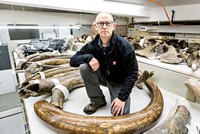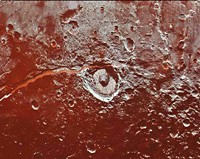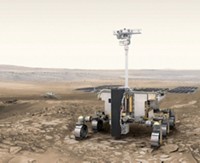Advertisement
Grab your lab coat. Let's get started
Welcome!
Welcome!
Create an account below to get 6 C&EN articles per month, receive newsletters and more - all free.
It seems this is your first time logging in online. Please enter the following information to continue.
As an ACS member you automatically get access to this site. All we need is few more details to create your reading experience.
Not you? Sign in with a different account.
Not you? Sign in with a different account.
ERROR 1
ERROR 1
ERROR 2
ERROR 2
ERROR 2
ERROR 2
ERROR 2
Password and Confirm password must match.
If you have an ACS member number, please enter it here so we can link this account to your membership. (optional)
ERROR 2
ACS values your privacy. By submitting your information, you are gaining access to C&EN and subscribing to our weekly newsletter. We use the information you provide to make your reading experience better, and we will never sell your data to third party members.
Physical Chemistry
Francesco (Frank) Asaro
by Susan J. Ainsworth
July 21, 2014
| A version of this story appeared in
Volume 92, Issue 29
Francesco (Frank) Asaro, 86, a Lawrence Berkeley National Laboratory (LBNL) senior scientist emeritus and nuclear chemist who helped devise the asteroid impact theory to explain the mass extinctions that wiped out the dinosaurs 65 million years ago, died in Redwood City, Calif., on June 10.
Born to avocado farmers in Escondido, Calif., Asaro attended the University of California, Berkeley, earning a B.S. in chemistry in 1948 and a Ph.D. in chemistry in 1953 under Isadore Perlman.
Asaro joined LBNL in 1950 to continue working with Perlman, who was also the head of the lab’s now-defunct Nuclear Chemistry Division. Together, they helped refine neutron activation analysis (NAA) into a technology precise enough to determine the origins of archaeological artifacts by measuring their chemical compositions.
For many years, Asaro was a scientist in LBNL’s Nuclear Chemistry Division, before working in its Environmental Energy Technologies Division.
He was part of the team that developed the mass extinction theory, which proposed that an asteroid’s impact hurled a cloud of dust into the atmosphere so thick that it obscured the sun, suppressed photosynthesis, and caused mass extinctions. For his part, Asaro contributed his great skill in measuring unusually high levels of iridium of extraterrestrial origin found in rocks from Earth’s Cretaceous-Paleogene boundary layer, which provided critical support for the theory.
Asaro spent much of his career applying NAA to archaeological studies. He demonstrated that Drake’s Plate, a metal plaque purportedly left by Sir Francis Drake when his ship dropped anchor at the California coast in 1579, was a fake. After his retirement from LBNL in 1991, Asaro continued to investigate a series of archaeological and historical challenges.
Asaro’s wife of 63 years, Lucille, predeceased him. He is survived by his son, Frank, and three daughters, Antonina, Catherine, and Marianna.
Obituary notices of no more than 300 words may be sent to Susan J. Ainsworth at s_ainsworth@acs.org and should include an educational and professional history.






Join the conversation
Contact the reporter
Submit a Letter to the Editor for publication
Engage with us on Twitter